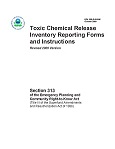On May 13, the US Environmental Protection Agency (EPA) announced its final “GHG Tailoring” rule to address greenhouse gas (GHG) emissions from stationary sources. The phased-in approach will initially address large facilities like power plants and oil refineries that emit most of the greenhouse gases from stationary sources. The regulated GHGs include carbon dioxide, methane, nitrous oxide, hydrofluorocarbons, perfluorocarbons and sulfur hexafluoride.
Starting in January 2011, Clean Air Act permitting requirements for GHGs will apply to large facilities that are already obtaining Clean Air Act permits for other pollutants. Those facilities will be required to include GHGs in their permit if they increase their GHG emissions by 75,000 tons per year (tpy). In July 2011, permitting requirements will expand to cover all new facilities with GHG emissions of at least 100,000 tpy and modifications at existing facilities that would increase GHG emissions by at least 75,000 tpy. The permits must demonstrate the use of best available control technologies to minimize GHG emission increases when facilities are constructed or significantly modified. EPA estimates approximately 900 additional permitting actions covering new sources and modifications to existing sources would be subject to review each year. In addition, 550 sources will need to obtain operating permits for the first time because of their GHG emissions.
Permitting requirements for smaller sources will await the findings of a 5-year study of the effects of GHG permitting of these sources, slated for completion in 2015.
According to the EPA press release announcing the final rule, the agency received about 450,000 (!) comments within the 60-day public comment period that followed issuance of the proposed rule in October 2009.
More information on the GHG Tailoring Rule and its implementation schedule can be found at http://www.epa.gov/nsr/actions.html.
What do you think? Has EPA struck the proper balance between regulating a significant threat to health and the environment and providing relief to small businesses and farms?

